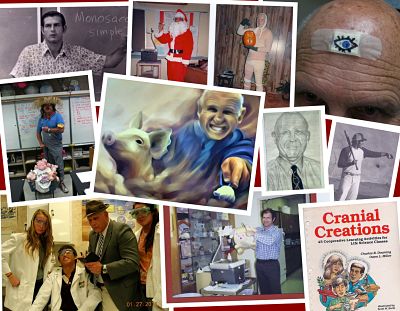A Science Guy’s Almanac. Year 2. September 26, 2016
Coaching Memories (continued) - Baseball
I coached football, baseball, track & field, and soccer during my twenty-three years at Monte Vista High in Spring Valley, California. Today, the focus is “America’s pastime”—baseball.
I played baseball from Little League through college at San Diego State University. Depending on the year, I was an average to superior player in most aspects of the game.
My best baseball season as a player was my final year in Pony League when I was finishing 8th grade. I hit something like .440 with five home runs. I pitched a no-hitter and a perfect game.
If you’ve been following this blog, you know that I did very well in the school track meet in 8th grade. 8th grade was the apex of my personal athletic career.
This preface has nothing to do with coaching. It provides background information for. . . Actually, it’s probably unnecessary. But, since I’ve already written it, it’s staying.
I accepted the JV Baseball head-coaching job because it sounded like fun. That's me in the header photo pointing to the outfield. Hmmm. I don't remember ever looking that thin . . .
We had tryouts. The players looked okay. The season began.
- Within days, my best two players were promoted to varsity. Things went downhill fast after that. We ended up with a single “W” in our record. We played people close, but we lacked both hitting and pitching to hold a lead.
- One of my players was a flashy shortstop. He’d been an All-Star in Pony League. He had excellent range, but his throws to first were always made side arm or lower.
- I explained that, while he might get people out at the JV level, he’d never succeed on the varsity because it took his throws too long to get to first base. He never changed. He never played varsity. I suspect his dad had coached him all the way up to high school and allowed him to mimic Gary Templeton. “Tempy” did throw side arm often—but he had a very strong arm.
I felt the sorriest for my “only” pitcher. I’m pretty sure the varsity coach left him down with me because I had no other viable options. He’s the only JV pitcher that year that pitched more than three innings in any game. My “other” pitchers had given up so many runs by their third inning of work it was a merciful act on my part to remove them from the mound.
I didn’t coach baseball again for seven or eight years.
One January morning before school, the principal came to me and said he’d heard I’d coached baseball before. He asked if I wanted to give the varsity baseball job a try.
I met the team for the first time during their final winter league game. We started practice a week after that.
Pundits were predicting the Monarchs to "successful" in the Grossmont League. I had a pretty good pitcher and one of the leading hitters in the league returning. Several other players showed good potential. As you can see in the article from The Daily Californian above, I was optimistic.
Things went along fine until we played our first league game. We were up by three going into the bottom of the last inning. They loaded the bases with two outs. The last runner was the result of a horrific play by our third baseman—our “best” hitter.
- Long story short, our number two pitcher hung a pitch. The hitter drilled it over a 15-foot tall chain link fence into the tennis courts that bordered the baseball field.
- We did not win a league game after that loss. The All-League pitcher ended up with an ERA over four. The leading hitter finished the season hitting under .220.
- At least once a week, other biology teachers and I sat around and re-arranged my lineup for the game the next day. To not avail.
Final anecdote.
I’m coaching third base in a tournament game. Standing in front of me is a senior who was playing varsity for the first time. It’s a close game. I signal the batter to squeeze bunt.
Since the runner on third can’t see the signs because of the angles involved, we had a verbal cue. If I said, “Head’s up, number 15” (or whatever the runner’s jersey number was) to the runner, that meant we were bunting and he was to take off for home plate at the pitcher’s first move. If I said, “Heads-up, Gibson,” (using the player’s last name) that meant nothing. I used this version a lot. By the way, Gibson wasn’t the last name of the runner on third in this story.
The pitch is thrown. The batter lays down a perfect bunt. They throw the batter out a first. The runner is standing on 3rd base. He had not made any move toward home plate.
“What are you doing here?” I asked.
“I hit a double and took third on the overthrow,” he answered.
It was that kind of year.
It was also the last year I coached any sport at any school.
Do you think there might be a correlation
between those two statements?
Next Almanac: Coaching memories continued – Track and Field
Follow me on Twitter: @CRDowningAuthor
and Facebook: https://www.facebook.com/CRDowningAuthor
My website is: www.crdowning.com






